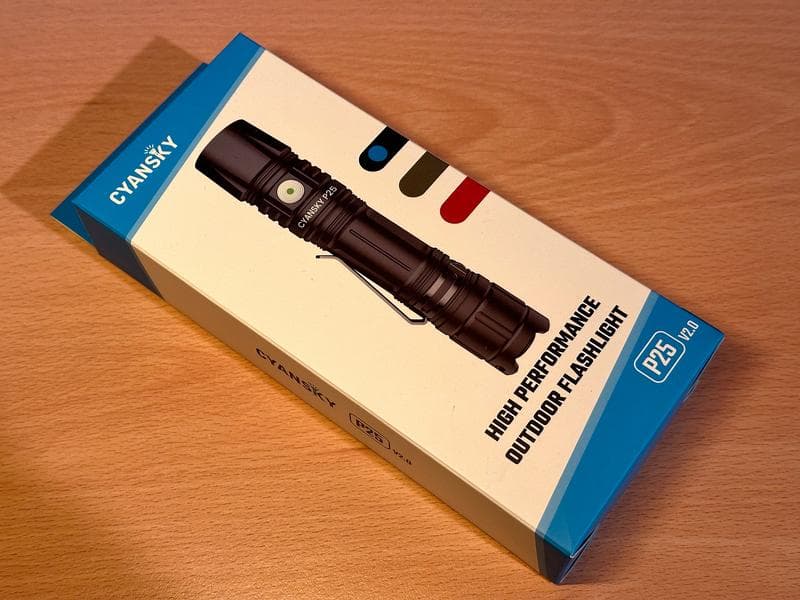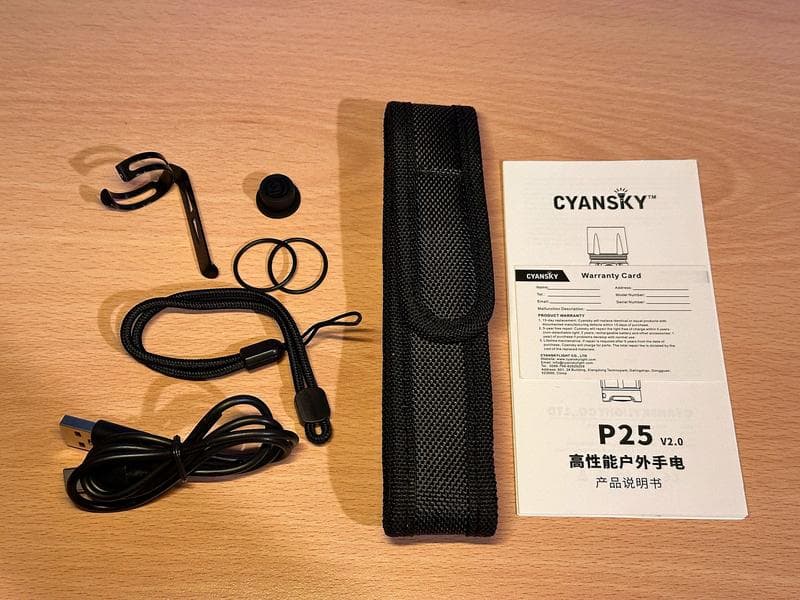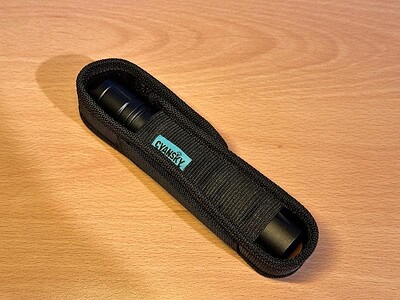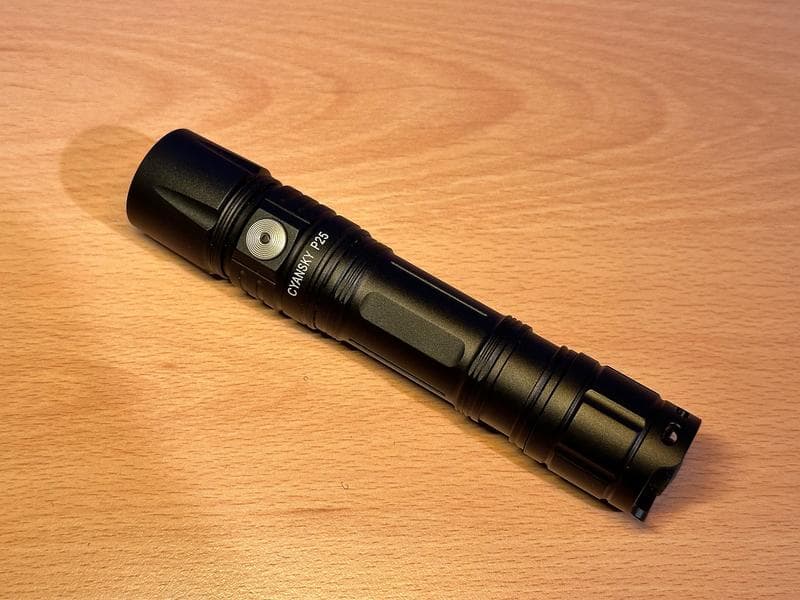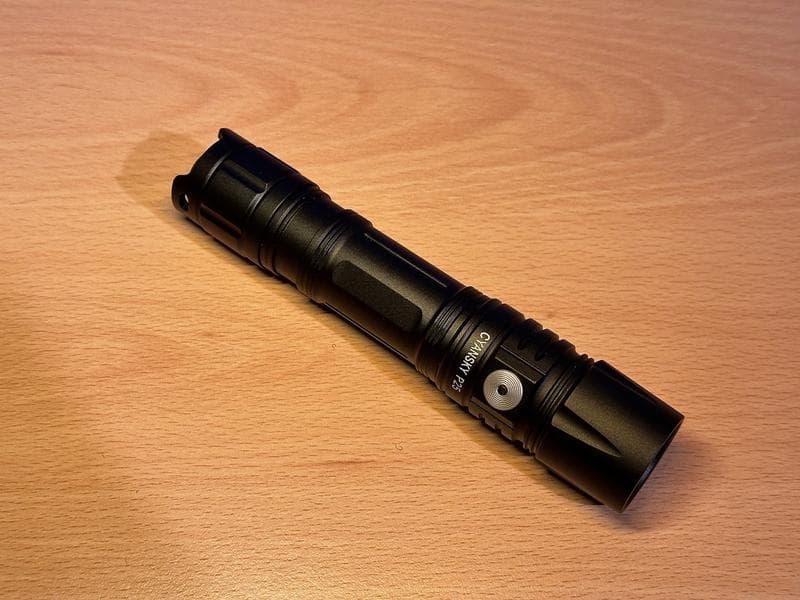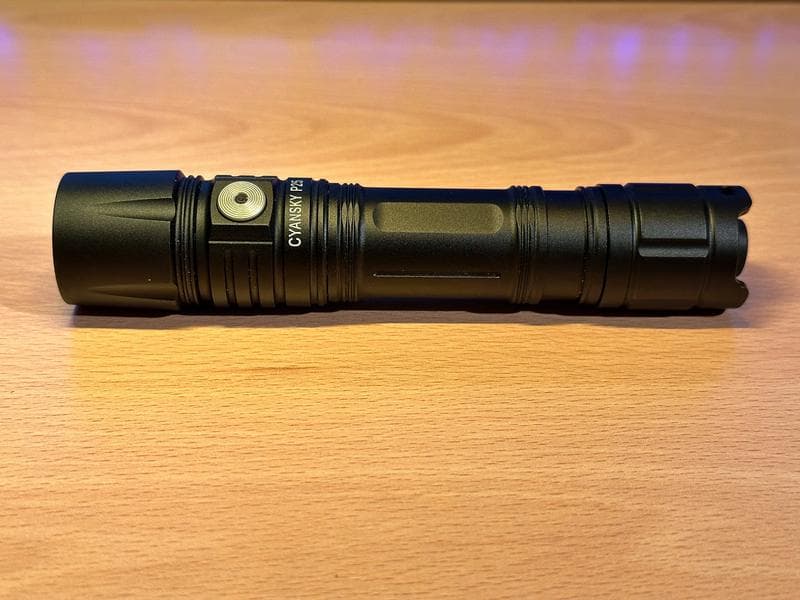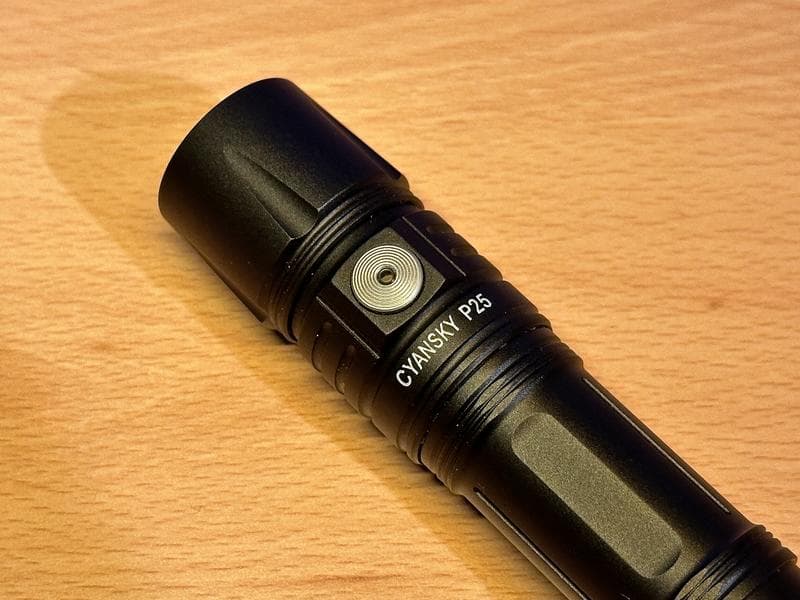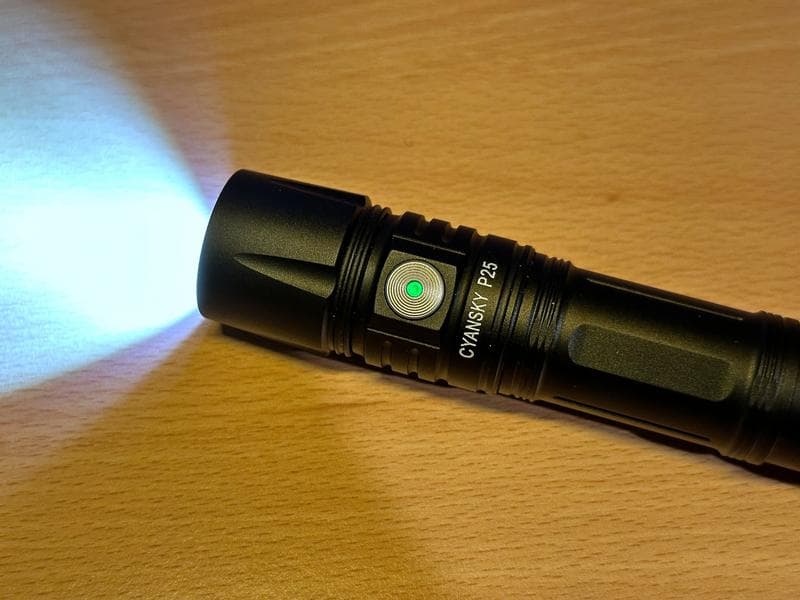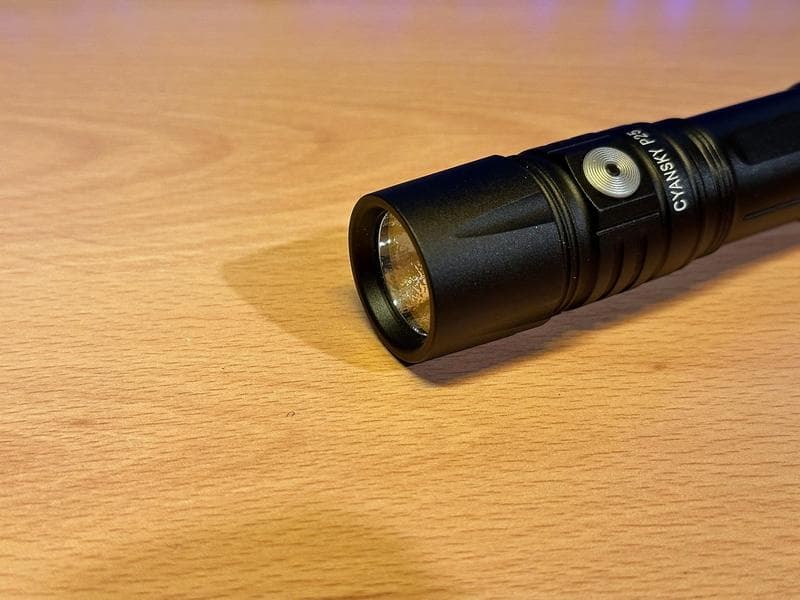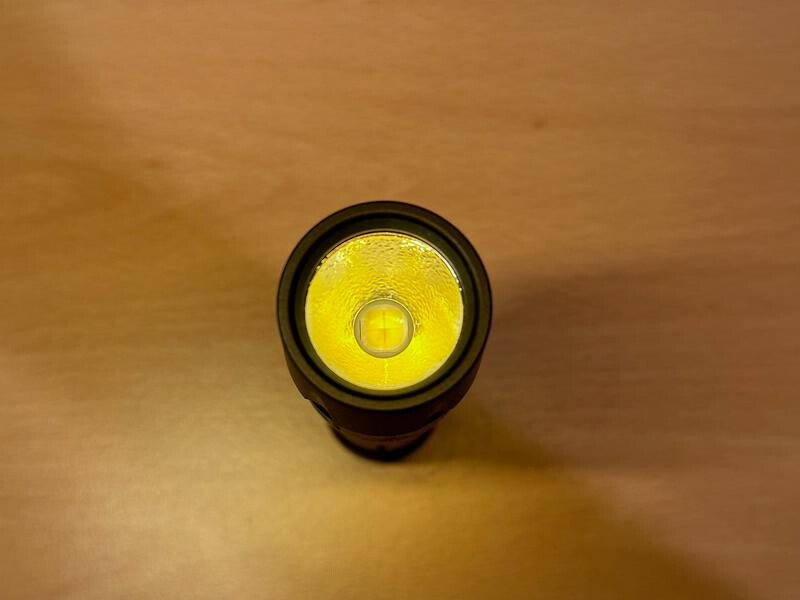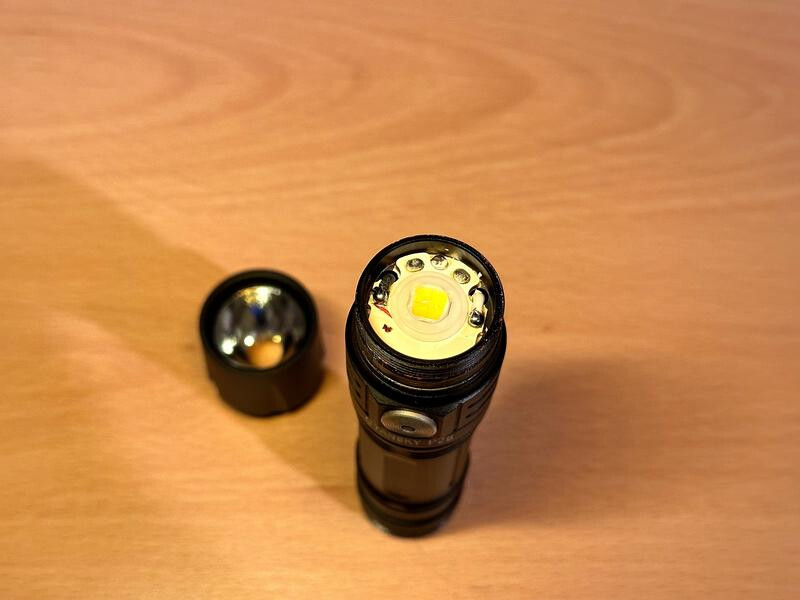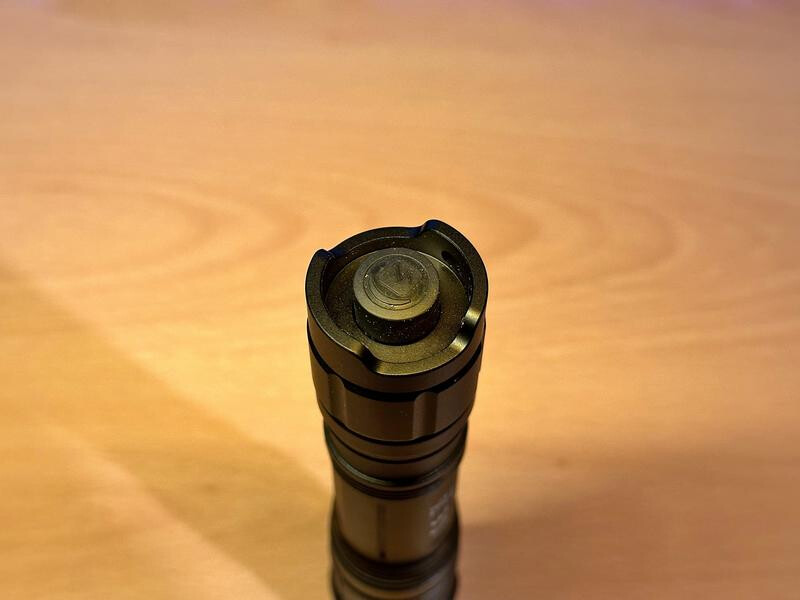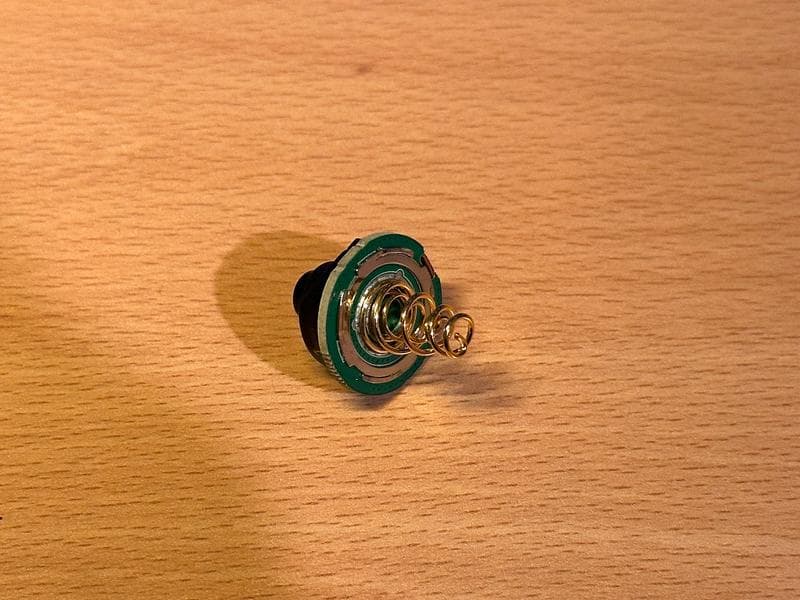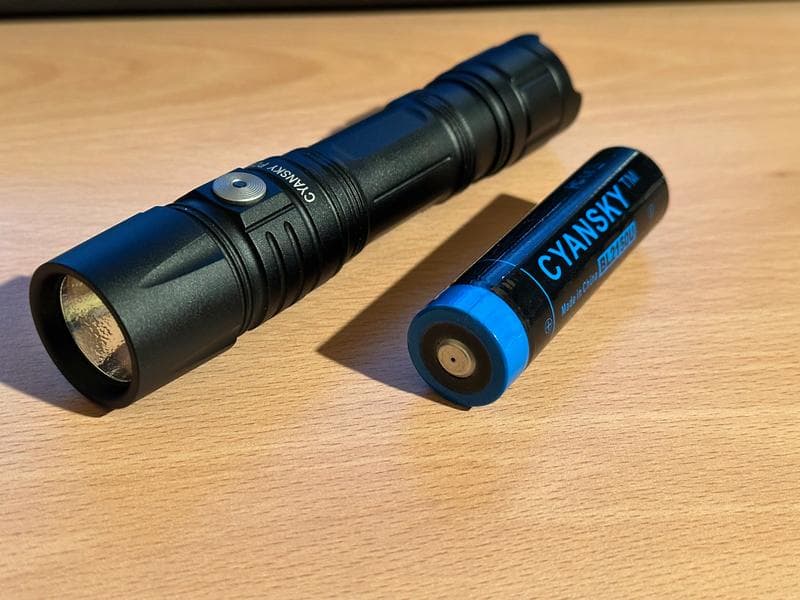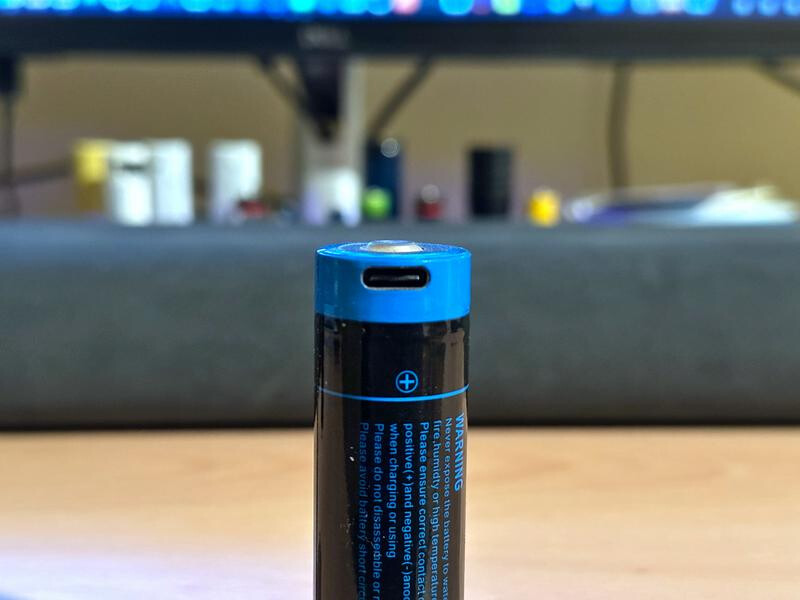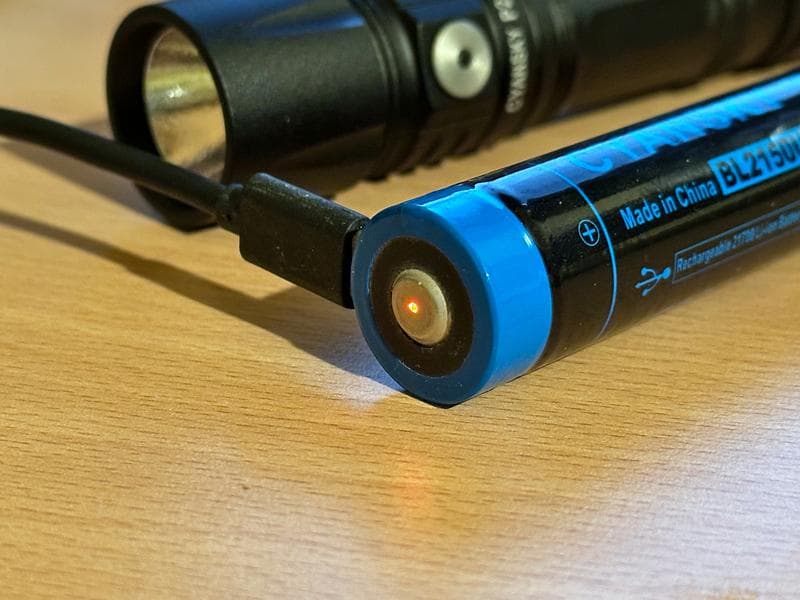The flashlight was sent to me by Cyansky for review.
Here’s the product’s link: Cyansky P25 V2.0 (non-affiliate)
And here’s the product on Amazon (non-affiliate) and AliExpress (non-affiliate)
The Cyansky P25 V2.0 comes in a nice cardboard box.
The box contains the following accessories:
- Pocket clip.
- Extra tailcap boot.
- 2 x replacement o-rings.
- Wrist lanyard.
- USB Type C charging cable.
- Carrying pouch.
- User manual.
- Warranty card.
The included carrying pouch is made out of nylon and its flap is secured in place via velcro.
The sides of the pouch are made out of elastic fabric, which adjusts to the flashlight’s shape and provide a snug fit.
A belt loop can be found on the rear of the pouch.
The Cyansky P25 V2.0 comes in matte, black anodization.
It’s using a single 21700 battery and is operated via dual switches.
The overall fit and finish of the unit I received is excellent.
On the lower part of the head we find the e-switch that’s responsible for controlling the modes of the flashlight.
The switche’s button is made out of metal and is containing a concentrical grooving around the indicator LED.
The indicator LED will turn on for 3 seconds whenever the flashlight is turned on to indicate the battery’s charge level.
- Green constant: 81% - 100%
- Green blinking: 51% - 80%
- Red constant: 21% - 50%
- Red blinking: 0% - 20%
The flashlight is using a smooth bezel to protect its glass lens.
Cyansky has used a orange peel reflector along with Cree XHP70.3 emitter.
The head seemed to be glued on the body, but I was able to take it apart using a pair of rubber strap wrenches.
A big centering ring is used to keep the big XHP70.3 emitter centered.
Plenty of thermal paste seems to be in place.
On the rear of the light, there’s the second switch of the flashlight.
It’s a regular, mechanical switch and it’s used to operate the power on/off of the light.
The tailcap of the light houses the mechanical switch assembly, which is held in place via a metal retainer.
Here’s the tail taken apart.
As we can see, the switch of the flashlight is using a double spring in order to decrease the overall resistance of the circuit.
The removable pocket clip is attached between the head and tail of the light.
It’s heavy duty and provides strong retention.
The bundle also comes with a Cyansky branded, 5000mAh 21700 cell.
The battery includes an integrated charging circuit that utilised a regular USB Type C port.
Once plugged in, an indicator LED shines up to inform the user about the charge’s state.
User Interface
The Cyansky P25 V2.0 comes with dual switches and thus its UI is having a tactile feel to it.
Here’s all the supported actions:
Power on/off: Single press (rear switch)
Mode cycle: Single press (e-switch) ( Low > Med > High > Turbo > Low > … )
Eco / Moonlight: While off, long press e-switch and turn on the light via the mechanical switch.
Strobe: While on, long press (1 second) the e-switch.
SOS: While on SOS, long press (1 second) the e-switch.
The flashlight’s firmware also includes mode memory. The last used mode will be memorised and resumed once the flashlight is powered on. Turbo is not memorised. If Turbo was the last used mode, the flashlight with resume on High.
Voltage warning is implemented through the indicator LED of the e-switch.
Once voltage drops below 3.0V, the flashlight will switch to Low and its indicator LED will produce red pulses.
Output
Here’s my output measurements along with the current draw across the available modes.
The included Cyansky 21700 battery was used to perform the test.
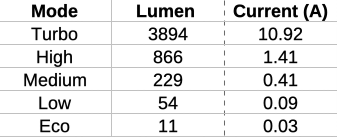
As can seen, the flashlight pushes almost 3900 lumen at startup while pulling ~ 11A of current.
That’s very impressive. Of course, such big output isn’t thermally sustainable for a single cell light, so the brightness will gradually go down in order to prevent the flashlight from exceeding its thermal limits.
Overall mode spacing looks pretty good.
Thermal Regulation
Here’s a thermal regulation graph I’ve created for the different modes of the light.
Facts about the thermal regulation graph:
- Turbo was thermally regulated over the course of 7.5 minutes down to 1100 lumen.
- During the test, the flaslight’s head temperature never exceeded 65C, so this seems to be the thermal limit that it comes configured with.
- High, Med, Low and Eco are fully sustainable for the whole span of the test.
- The flashlight’s driver seem to be providing constant current for all of the available modes since the output of the modes remain constant during the span of the test.
Outdoor Beamshots


